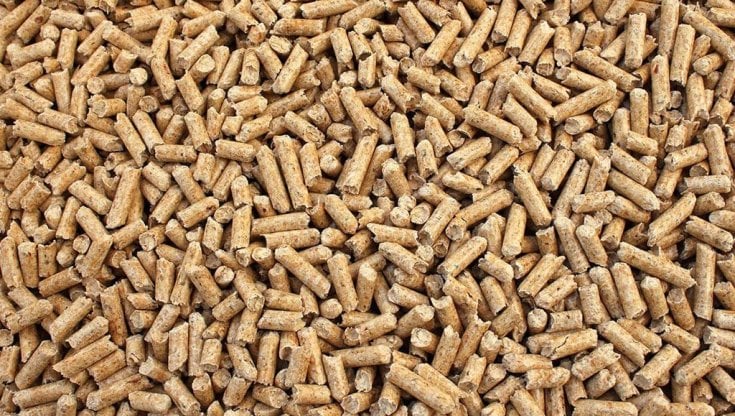The cleaning of farmland and gardens and the cutting of prunings are green waste, but also a resource that can be recycled to save money by creating biofuel.
Using a device (shredder or chipper), in fact, waste materials can be recycled by transforming branches and trunks, even of large dimensions, into wood chips, compacting smaller material to be left to macerate. Obtaining from plant debris such as leaves, hay, straw and grass from wood chips to be transformed into pellets to supply the stove.
Hemp pellets against expensive bills?
The chipper, which is found in different variants, manages to shred branches, grass, leaves and organic waste, transforming them into easily compostable material. The shredder chops wood and other components up to 10mm, provided that only fresh, never dry wood is used.
To make biofuel at home, you will also need to have a pellet machine (machine for making pellets). The size of the particles of raw material introduced into this device greatly influences the productivity of the machine and the quality of the final product.
The cost and the initial investment for the equipment will be amortized quickly in the annual household economy, also thanks to the savings in green disposal, transport included.
The self-production of pellets from grass biomass allows you to bear costs that are a small fraction of what can be purchased on the market.
Wood by-products can be used as raw material, but most of the pelletizable raw materials are common freely available biomass: sawdust, wood waste, waste paper (or waste paper), nut shells, weeds, hay, straw.
Nocciolino, the economic and sustainable alternative to pellets
After drying, for which it is sufficient to leave the wood chips obtained for a day in the sun, we move on to the actual production, after calculating the final humidity degree (measured using the hygrometer) which must be a maximum of 15% .
The pelletizer is a compression device, requiring little energy, in which heat and pressure are used to compress and bind the raw raw material into final products of the form of pellets: the greater efficiency in burning the material in the form of pellets justifies the absorption required to produce it. The density of the pellets is essential for combustion efficiency: for pellet stoves, the best ones are those with high density. But many pellet mills, especially small or low-cost ones, struggle to produce it of this density, which breaks easily creating a dust that can clog the stove or boiler and increase the amount of ash produced by the fuel.
The pelletizers to use have a ring-shaped head that use less energy to produce better quality pellets and a higher density fuel. Rollers force the material through a die which gives it its characteristic tubular shape. In this machine it is heated with steam and/or pressure so that the lignin present plasticizes it, holding the pellet together after cooling.
A pellet mill for self-consumption of pellets produces up to 600 pieces every hour and the cost starts from €1,500. It is possible to produce between 20 and 60 kg per hour with a machine with a 3 HP single-phase motor. Commercial production devices produce thousands of tons of pellets every hour.
The pellet obtained from virgin wood chips has a better caloric yield and is more resistant. Woods such as beech, birch, poplar, oak have a low resin content and can be integrated with percentages of up to 40% with fir or pine wood. Corn can be used as a natural binder.
News I am Telegram or Whatsapp


